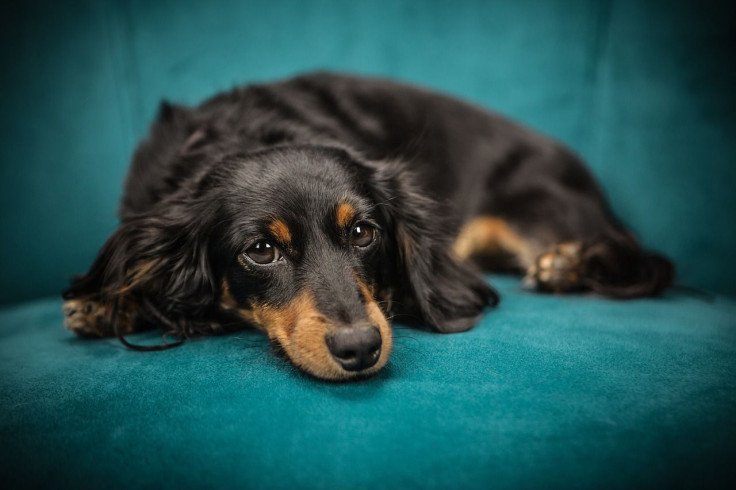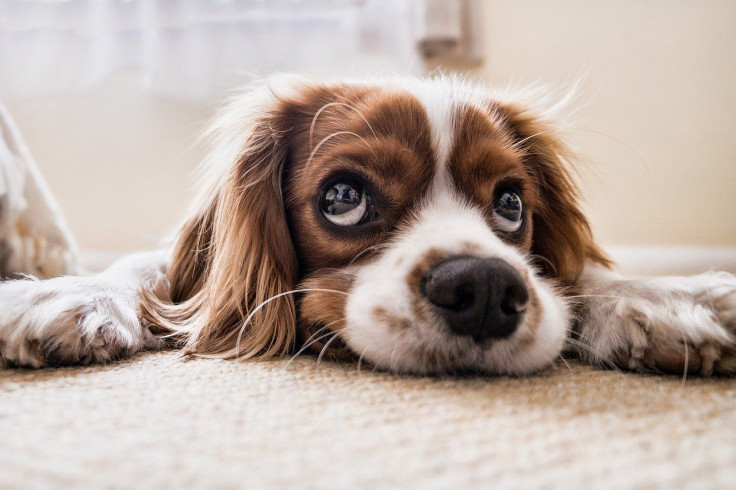National Pet Obesity Day 2020: Help Your Furry Friends Lose Those Unwanted Pounds
KEY POINTS
- Stick to pets' regular mealtime and feed them just the right amounts
- Add a few blocks to your pets' daily walk route
- Monitor your pets’ weight from an early age into adulthood
National Pet Obesity Day is celebrated every Oct. 14. We can all use this day to keep our furry friends’ weight in check. Are they getting a little plump on the sides? Do they get somewhat lazier these past few days?
Ideally, your pets should have a body shape closely similar to an hourglass if you look at them from your viewpoint. Your view should be of their tummies slightly curved in what could be their waistlines if they are humans. There should only be a thin layer of fat covering their ribs and spine.
Try to run your hands along their bodies. You should feel the ribs and hips without having to exert even the slightest pressure.
Data science can transform how we tackle pet obesity. @darrenlogan shares how in this latest blog: https://t.co/1kM3XvATpE#PetObesityAwarenessMonth #data #science #dog #PetObesityAwarenessDay #petobesity #latestblog
— WALTHAM Petcare Science Institute (@waltham_science) October 12, 2020
If your pets do not have that slightly hour-glass body shape and you can’t feel their ribs and hips right away, your pets have developed unwanted fats. Worst, they may be already among hundreds of pets that are overweight in the country.
According to Banfield Pet Hospital’s 2020 Veterinary Emerging Topics (VET) Report, more than 50% of the 1,000 dogs seen at the hospital in 2019 were obese. That year alone, as much as 51% of over 1.9 million adults dogs brought at Banfield were already categorized as overweight or at least 10%-20% higher than what the ideal weight among pets should be.
They may look cute thick, but when pets pack on the pounds it’s cause for concern. Do you know an overweight pet? Take a look at what guardians can do to help their furry friends: https://t.co/U9sa43NiHE#PetObesityAwarenessDay #BCSPCA pic.twitter.com/wWfRJ4OK5W
— BC SPCA / BCSPCA (@BC_SPCA) October 9, 2020
Obesity in pets may lead to health conditions that include heart disease and diabetes, as well as joint disorders and low immune systems.
If you’re worried that your pets are gaining fat a little more than they should, here are three simple ways to help them stop the weight gain.
1. Limit the treats, stick to their regular mealtime and feed them just the right amounts
There could be nothing cuter than pets getting excited about their treats. They are irresistible, yes, but giving them treats on top of their regular meals will do more harm than good.
A lot of pet owners are guilty of giving their pets extra treats multiple times a day. This behavior is particularly prevalent today because of the stay-at-home measures due to the pandemic.
People are working from home which means they get to spend the whole day with their furry friends. According to a separate study from Banfield Pet Hospital, 20% of those working from home have their pets beside them all the time.
As COVID-19 continues, there are already 73% of pet owners who are worried about going back to the office. 59% of them are concerned that their pets may suffer separation anxiety.
As a result, owners are giving their pets extra “tender, loving and care'' with 65% of owners giving their pets increased affection as well as extra treats. As a result, the study said that 33% observed their pets gained weight during the quarantine.
With that said, you need to limit the treats and instead stick to their regular mealtime. Also, stop leaving a whole-day amount of food which they will probably consume in one eating.
Ideally, food should be given to pets based on volume. It will help to use a kitchen scale when giving meals to pets. Your vet can give you guidelines on food volume depending on your pets’ age and breed. Also, check with your vet if there are healthy alternatives to store-bought treats, like carrots or bananas.

2. Add a few blocks to your pets' daily walk route and a few minutes more to daily playtime
Just like with people, your pets need increased time in play and exercise to beat those weight gain. You don’t have to design a strict workout routine for them. Simply adding a few blocks to your regular walk route will give your pets their much-needed physical activities. You could actually start with this even if your pets haven’t started gaining extra pounds.
According to the 2020 VET Report, 10% of obese pets could no longer lose weight after their diagnosis. For those that successfully shed pounds, 40% of them gain the pounds back in 12 months.
While factors such as age and breed affect the manner they lose weight, pets should at least drop 10% of their body weight after 3 to 6 months of being diagnosed as obese.
Playtime and physical activities should be part of your pets’ daily lifestyle. According to Banfield, the risk of obesity increased as pets age until seven years of age. Small breeds of dogs are also more prone to obesity. However, smaller dogs can lose weight faster than larger dog breeds.
3. Monitor your pets’ weight from an early age into adulthood
Check out the WALTHAM Puppy Growth Charts that researchers developed in 2017 for both male and female dogs in five size categories.
The chart was designed by a team of researchers and veterinarians from Banfield, University College London’s Great Ormond Street Institute of Child Health and Institute of Life Course and Medical Sciences at the University of Liverpool.
“We know optimal growth is crucial for the future health and wellbeing of dogs, as many of the health issues that appear during early life are associated with poor weight management. The results of this study suggest that these growth charts can identify healthy growth as well as patterns of growth signaling possible health problems,” study co-author Alex German said in a press release.
If you have doubts about whether you’re getting the right data on your pets’ weight gain, you can always consult your veterinarian. A regular visit to the vet will always ensure your furry friends are healthy, happy and far from obesity.

© Copyright IBTimes 2024. All rights reserved.











